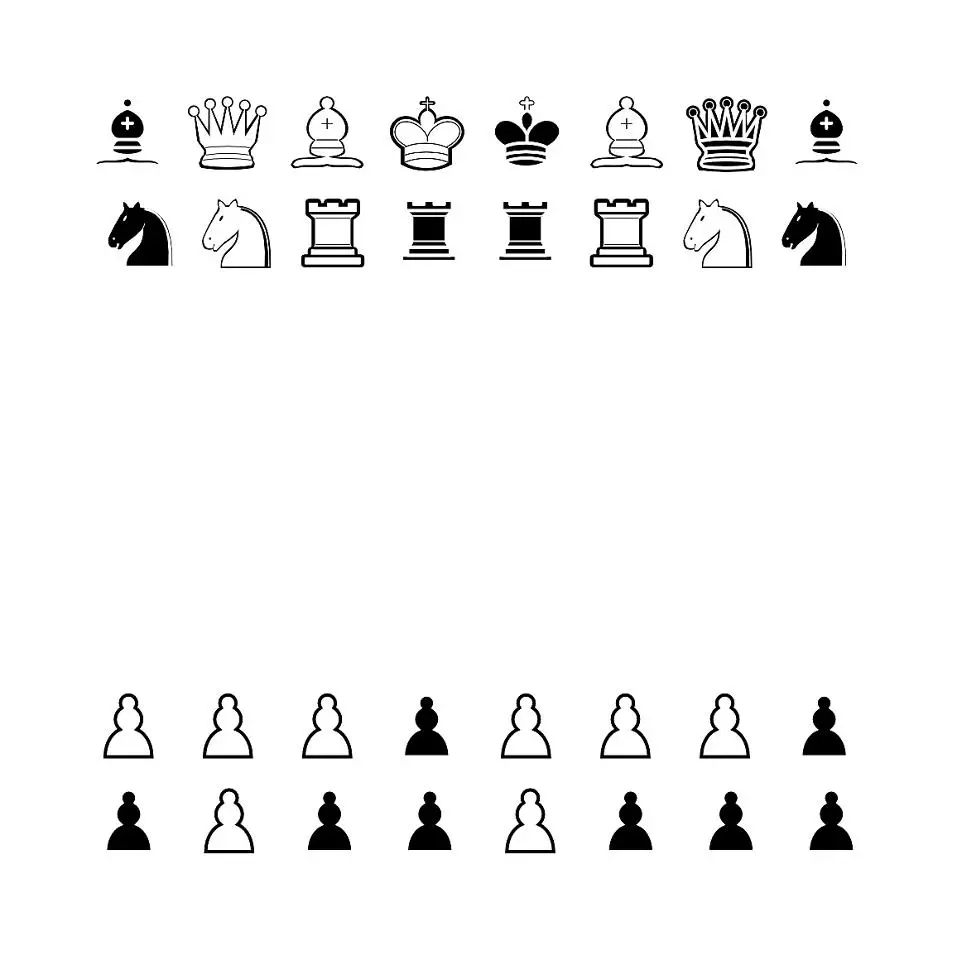There is a reason for USB-C extensions not to be part of the standard. They can be bothersome in the best case and dangerous in the worst.
If you want a more detailed explanation, USB-C is a small connector that was designed primarily for data transfer, extended power range delivery (240w) was essentially hacked on to the standard. Electricity arcing between the contacts on the connector is the biggest challenge with this hack, since the contacts are small and very close together, which could burn out the circuit board and start fires. For EPR to work safely, there needs to be a lot of extra components on the circuit board/female connector side, which there simply isn’t enough space for on an f2m extension cable.
As for why USB-C cables are so short, it’s simply a matter of physics, carrying high speed data over larger distances would result in higher losses and requires thicker conductors and more shielding, which is why you don’t see USB4 Gen3 cables over 1 meter unless they are optical, and longer “charging cables” are only rated at USB 2.0 speeds, because more often than not they don’t even have the USB 3.x data pins on their connector.
You are a brilliant woman of many talents, Margot Robbie!
That’s esteemed Academy Award nominated character actress Margot Robbie to you!
Also, thank you.
You’re such a joker
I would say more like a Harley Quinn.
I have this cable: https://www.spigen.com/products/arcwire-usb-c-to-usb-c-cable-pb2202
It’s 2 meters long, 240 watts and supports Thunderbolt 4/USB 4 (40 gbps).
I couldn’t test the 240 watts charging as I don’t have any device pulling more than 100 watts, but the Thunderbolt 4 part definitely works.
Apple sells a 3 meter Thunderbolt 4 cable (albeit limited to 100 watts of power) that isn’t optical either (I think there’s some special circuitry in the plugs though).
You’re right. Those are active cables which I forgot to mention earlier that have special circuits that amplify signals, but are also a lot more expensive as a result.
Will I get banned if I don’t call this person Margot Robbie, because they claim to identify as a famous Hollywood actress?
I believe that Margo Robbie identifies as esteemed Academy Award nominated character actress/esteemed Academy Award nominated character actresses.
$90 for a cable and it’s not even braided is wild to me.
I prefer not braided. Both for cables and hair. More of a ponytail kinda guy myself.
Braiding doesn’t really increase the cable quality per se though…?
It’s $90 because it has fairly thick wiring and as Margot said is likely an active cable (with a chip in the plug). It’s actually fairly cheap considering the feature set.
A shielded braid reduce the noise on the data lines and gives a better signal integrity. So it doesn’t increase the quality of the material, but increase the signal to noise ratio (SNR), which is very important for data transmission.
Braided cables are just higher quality imo because they can’t tangle easily and take a lot of effort to bend.
I don’t seem to be able to upvote this twice.
You could always buy more copies of “Barbie” on Blu-ray for Christmas.
Just saying.
Absolute gold 🤣
It’s amazing for a “standard” that there can be so many non-standard ways to do it. Your explanation is great and just reminded me that cable tester tools are a really good idea to have at home. There was one in Kickstarter earlier this year, I think, that was a really smart idea. I don’t recall what it was nqmed though. Maybe you have heard of it? I’ll see if I can find it.
Regardless, there are some devices that really need a specific type of usb-c cable to function properly and/or not burn the circuitry. (i.e. Nintendo Switch, the original release model (though, they may have fixed it in later hardware revisions))
Edit: Found it! That cable tester that I was referring to was called the BLE CaberQU. I think it is a really neat idea.
Nice! I’ve wanted a tool exactly like that many times. I’ll back it and see.
The closest I could find before were essentially pin to pin continuity checkers, which are useful for telling if a cable is PD only, 2.0 vs 3.x, or has a line break, but most of those can be eyeballed, otherwise metered. So these just checkers just add precision and speed to something you already know how to do.
The runner ups were the (now ubiquitous) inline inductive energy trackers, because they can tell you a bit more about the gauge of the wires in the cable which can be important, especially high amperage 5v like pi 4.B
But to test quality of shielding for high rate data transfer, DP and PCI-E tunneling, etc., the only option was manually user testing with adequately powerful devices.
I’m glad someone is smart cause I sure ain’t
Nice explanation, thanks!
It’s a great explanation. However you have some pretty egregious use of commas that made it a lot more confusing. I had to read it over multiple times to fully understand.
It may seem like nitpicking but these subtle issues end up making it harder to comprehend and overall results in more time and effort for everyone you’re trying to inform.
You know you explained a topic pretty damn accurately when the Stranger On The Internet can only use the good ol’ “too many commas’” argument to bring you down.
Why are you assuming he’s trying to bring the guy down? He could genuinely have a problem parsing the comment and you’re here just dismissing his experience.
I didn’t know that assuming your experience applies to everyone is generally accepted in Lemmy nowadays, considering the voting ratio.
I don’t agree with his point that there are too many commas, but implying that his experience is faked and his comment is made due to malicious intent is just particularly stupid.
My comment was intended more to praise OP than to deride the person who replied. It was probably worded badly. I guess I should have said something more along the lines of ‘You know your argument is good when the only fault to be found by internet strangers is too many commas’.
Yeah, that actually conveyed your meaning much better than your original wording. I understand what you meant now. That means my comment was way too aggressive for what you wanted to convey, so I will apologize.
What the fuck did you just fucking say about me, you little shit? Ill have you know I graduated top of my class in the Navy Seals, and Ive been involved in numerous secret…
Oh. Oh wait. I think the shock of what I just read reverted me to default internet discussion… Was that just a polite exchange where we saw the others point of view, then both admitted we could have done better? Nice!
Didn’t have any issues reading it. Come off it
Some languages have a very different usage of comas. Maybe OP’s mother tongue is one of those
Anybody care to sum this up for people who can’t watch videos?
So a standard cable needs to be chipped to show its rating to the device, its not that the device can pull what it wants or can get, but the cable itself tells it what it can supply. Extension cables can’t do that, because it doesn’t know what it’s plugged into, and that would be if they even bothered to put a chip in. They instead piggy back off the chip for the main cable. The problem comes when you you have a 240 watt cable hooked up to a cheap 120 watt cable, with the device being told it can push 240, and starts to super heat the extension cable
Brilliant thanks
5 sentences that inexplicably need a 9 minute video to say
Fuck YouTube
Haven’t you heard about Raid Shadow Legends?
deleted by creator
This sounds solvable, doesn’t it? Have the extension cable have a chip saying it can do X at maximum, then compare with whatever is to be extended and communicate the minimum of both upstream. Might not become a sleek cable-like design, but would extend the 240W cable with the extender safely staying at 120W
That’s an active extension cable, which is essentially a single port USB hub.
Shouldn’t it be possible to only do the negotiation part and otherwise bridge everything? Not having to do anything high-bandwidth actively should keep the silicon costs down.
Yes, and such cables already exist, like this splitter cable:
https://www.amazon.de/dp/B0CRZ6JJ6D (not an affiliate link)
It’s not an extension cable, but it does exactly what you are suggesting. It gets the available PD profiles from the charger and then intelligently negotiates a profile that will work best to split the power to the 2 devices connected to it. The charger thinks it’s just connected to 1 device, and the connected devices think they are directly connected to a charger.
Doing the same for with a USB C extension would be trivial, but it’s probably hard to market such a cable when passive USB c extension cables are available at a fraction of the cost, even if those aren’t compliant to the USB standard
I wish there was a clearer explanation or nomenclature for this. With things like cables and converters everything always seems to have a black box layer.
I don’t understand why there are so many PD profiles either. Maybe Cat-1 USB-C, Cat-2 USB-C, etc? Maybe just having a smaller set of voltage-defined profiles that have a safe maximum current rating? Maybe that’s already how it is? I don’t know
There are technical reasons for why so many PD profiles exist.
In fact they were not enough, which is why the USB Standard was extended with the “PPS” extension recently, which let’s the attached device freely choose a voltage between 3V and 21V in steps of 20mv, and more importantly it let’s the device freely change this voltage without interrupting the charge process. This change makes it possible for devices to bypass their own but in charging electronics and just directly forward the voltage coming from the charger to the device, improving efficiency and significantly decreasing how much the device hears up during charging
Sadly PPS is not found on many devices or chargers yet, and makes the already complicated USB C charging situation even more complicated for consumers
Heh heh heh. Wait till you dive into the world of “That $15 cable costs 12c to make.”
Getting $30 cables for $3 with my employee discount was almost the only good thing about working for Best Buy in the early 2000s.
I’m right now in China and those cables cost $0.50 shipped to your address, so not surprised
Well, the source checks the cable using the CC line which doesn’t go through the cable (VCONN). So source only knows the cable directly plugged in. To make the extension cable visible, the sink would be required to check the cable plugged in using VCONN and then the tell max ampere to the source over the other CC that goes through the cable.
2 Problems:
-
Sink devices normally don’t read or can’t read VCONN as far as I know
-
No way of detecting if a third cable (extension in the middle) is present and what specs it has
-
Soon on Amazon…
1m USB-C CABLE HEATER!! 0.99c
($5.99 shipping)
Pretty much this, thanks for the summary
Well I’m glad I know that now.
Correct, except for your example. Firstly, 120 watt USB c cables don’t exist, only 60w, 100w, 140w and 240w. And only plugging in a 100w or higher cable into a 60w extension would be dangerous, since it would allow drawing 5 amps on a cable over an extension only designed for 3 amps. However, as soon as your extension is rated for 100w it is completely safe to use with any USB c cable, even those rated for 240w, as those only operate at a higher voltage but still only allow 5 amps max.
I have also never seen an USB C extension cable rated for less than 100w, so this is kind of a moot point. If 60w usb c extensions exist somewhere, they would indeed be dangerous, but I have never come across one
Interesting, I’d never trust any USB cable to push anywhere near 100 watts anyway haha good god, the most I ever do is maybe 20w at 5v.
I’ll keep that in mind when buying cables in the future though this is very useful info!
As a point of reference, Lenovo Thinkpad’s have something of a cult following for their reliability and versatility.
My T490s has a USB-C power supply which provides 45w (20v at 2.25a).
The thing is, when docked it’s not only pulling power through that cable, but also network, USB devices, and providing video for 2x monitors in 1920x1080. It’s kind of astonishing to me how much can be crammed in to one little connector. That said, it’s frustrating trying to find a usb cable that works reliably, because as you’d imagine not all USB-C cables support the same specs.
Is the dock USB-C or Thunderbolt?
It’s USB-C.
If you buy a Steam Deck, or the Lenovo laptop I have for work, the only charging options you have are USB C. Their standard chargers put out at least
6045 W, and they aren’t particularly special. In fact, I’m pretty sure 20 W at 5 V won’t be enough to supply these while in use, so you will either be using battery with long charge times in between, using them with battery-assisted power for longer use times until you hit those long charge times, or using the6045 W or more at whatever voltage the chargers provide.The Steam Deck charger is 45W.
While this is handy to know, it doesn’t negate my point.
IIRC the one that came with my OLED model is 65WIt appears I did not remember correctly
I’m looking at the one for my OLED deck right now and it’s labelled as 45W (20V 2.25A).
The ones I’ve seen that go over 45W specifically for the Steam Deck are mini docks with HDMI out and more
My laptop can do 240W over USB-C, I’m just waiting for a charger that can do it with a modular cable
It has a 240w charger but have you checked to see that it’s using all 240w?
Most laptops use (up to) 120w.
It can use almost all of it using the GPU
What’s the make and model of the laptop?
Framework 16
How did we possibly survive with entirely dumb power chords?
Safety regulations are written in blood. Electrical fires were indeed a problem. It’s why there are rules on how many outlets need to be in a room, how spaced out they need to be (to curtail extension cord usage even when the builders are trying to be cheap and stingy with outlets). It’s the reason why we have breakers and GCFIs and RCBs and AFCIs. It’s the reason why we have electrical certification bodies like UL which won’t certify your cable or appliance if the cords are too thin.
There’s a lot of smart stuff we do behind the scenes to make dumb cords safe because even smart people make dumb mistakes.
“Dumb” power cords have thicker gauge wire than USB-C cables and much larger contacts.
This is not about contacts but cableburning tho.
Hence the thicker gauge wire.
Extensions aren’t part of the official spec, so they aren’t actually certified as proper USB-C.
Same risks as any other janky no-name gear you see online, even if it SAYS it’s rated for a specific throughput or power rating, that may not be the case.
deleted by creator
This is what AI says about this video:
The video is about the dangers of using USB-C extension cords. The narrator explains that USB-C extension cords are not officially certified by the USB Implementers Forum, which means that they are not guaranteed to be safe or reliable. He also explains that USB-C extension cords can be dangerous because they can overload the power supply of the device that they are connected to. This can cause the device to overheat and even catch fire. The narrator recommends that people avoid using USB-C extension cords altogether. Here are some of the specific dangers of using USB-C extension cords:
- They can overload the power supply of the device that they are connected to.
- They can cause the device to overheat and even catch fire.
- They can degrade the performance of the device.
- They can be unreliable.
The narrator also explains that some USB-C extension cords have a label that says “USB 2.0 low speed devices can only work with one side of the ultra high rate extension cables interface.” This means that the USB 2.0 connection is only available on one side of the cable. This can be a problem if you need to connect a USB 2.0 device to the cable.
The narrator recommends that people avoid using USB-C extension cords altogether. If you must use one, he recommends that you use a high-quality cable from a reputable manufacturer. You should also make sure that the cable is rated for the power requirements of the device that you are connecting to it. Overall, this video is a helpful resource for anyone who is considering using a USB-C extension cord. It provides important information about the dangers of using these cables and how to avoid them.
As always AI doesn’t quite get it. One of the main points is that it could catch on fire and burn down your house. Plus you’ll run into other problems as well. You’re not supposed to buy extensions for USB. Buy a longer cable instead.
Jokes on you buddy. Most people can’t afford houses these days.
But yeah, if you don’t know what exactly what you’re doing, err on the side of caution
I need the super duper reliable video summary LLM I was promised. Or else!
I even bought my pitchfork for it, see? ----₤ What? It was on sale.
Idk man. If you’re writing wrong stuff, people will call you out here on Lemmy. Doesn’t really matter who you are. And the issue was someone wanting that info as text.
You’re a bold one. Lemmy hates videos and AI both.
deleted by creator
I asked the AI if it was wrong or you were wrong. It said you were wrong.
Who am I to believe?
deleted by creator
I’m sick of stuff that should be ~2 paragraphs of text being a video. I do not want to watch a person or hear a narrator, I interpret written information much more effectively, and being text I can retain significant portions of the document as necessary.
Strangers passing in the street
By chance two separate glances meet
And I am you and what I see is meYou know, you don’t have to watch it. You can find the information elsewhere in text format. But I guess we all need to conform to your preferences.
It’s nice that you’re so ready to delegate to my natural authority, but unnecessary.
Well I prefer the video. So make sure you watch it. Give a like as well.
The AI got most of it vaguely right, but unsurprisingly a lot seems to go above its head. Kinda like reading a shitty tech journalist writing about something they don’t understand at all.
The risk isn’t usually the device you connect a bad cable to (they have internal limiters), it’s the cable itself. You can easily overload a cable if the extension cord can’t signal the lower limit if it’s own rating and the other cable’s rating.
The USB 2 part is also misleading.
I’ll have you know that I’ve been using a 2m extension on my deck power supply for a while and haven’t had any fires to speak of. Almost none actually.
Almost none so not zero?
thats_the_joke.gif
This is my ship, HMS Can’t Possibly Sink Again IV
Technically extension cables were not part of the original USB spec, either, but that did not prevent oodles of them from appearing pretty much instantly. They solved a problem, there was a need, and thus they happened.
I.e. there never was supposed to be any such thing as a passive male USB-A to female USB-A cable, and yet pretty much every little MP3 player from 2001 to about 2005 came with one regardless.
I never wondered about this, but it makes sense now. Off topic but man, the dry mouth noises he makes inbetween sentences are driving me crazy…
Yeah after looking into it it totally makes sense to me.
Off topic but you user name is the bestos.
Seems negligent to not include extension cables in the spec. Lots of hubs have too short of cables, or one needs to expose a plug somewhere other than where the PC is.
True, although shady Amazon sellers will probably still sell you a fire hazard cord that isn’t to spec.
In theory the hub should be active and participate in the power negotiations
You just get a longer USB-C cable.
A lot of hubs have non detachable cables.
yeah, dont buy those
Yeah, I won’t buy another one again, but now that I have one, I don’t want to e-waste it just because the cable is too short.
Electric fire danger is really changing my opinion on this though.
This risk is a bit exaggerated. If you’re charging a phone or even a non gaming laptop, most extensions are still fine. Of you try to push 240W over a cheap Amazon basics cable… Yeah no.
Those are 90% of the ones available, 95% of the small factor ones and 99% of the affordable ones. One of the main reasons for them to be non detachable is because most users would pick any random USB cable and complain it doesn’t push 4K while charging the laptop.
Source: I’ve made the percentages up, but it’s very close to that range.
Actually if somebody knows one that’s good, small, affordable and detachable I’ll be happy to know.
I got this one, works as expected
USB-C somehow managed to be the worst “standard.” Hopefully the next big USB port doesn’t allow for so much variance. I don’t see why a specific wattage and data transfer rate isn’t included in the specification. I can scarcely believe they managed to standardize it so well that I can plug the wrong cord into a port and break something.
Per the video, the usb-c connector on the cable has a chip that communicates the maximum current that it can safely pass. By plugging it into a lesser rated usb extension cable, that assertion is now wrong, potentially dangerously wrong if enough current is sent that the wires in the extension overheat.
I have a 240W extension from AliExpress, used with a 120W power for my laptop, it never gets hot even when using 100+W
Because you made sure the cable is rated for more than what you’re using it for. The problem is when somebody doesn’t do that. A 60W cable hooked up to a 120W power supply, for example.
My highest charger is 65W, that’s enough.
How does this apply to a usb-c-to-headphone-port adapter, if at all? If someone’s using one to regain access to a 3.5mm audio jack, are any risks posed?
Usually if a thing is not allowed, there is a good reason for it. Unfortunately many people seem to ignore that because they don’t know or understand the reason.
don’t wanna watch anything rn but boosted for later
Removed by mod
did you mean :
Post the TLDR or FO
?
TLDR || FO ?
PtTLDRoFO,Y❤️🤟🙏🎉🍺💪🥂






















